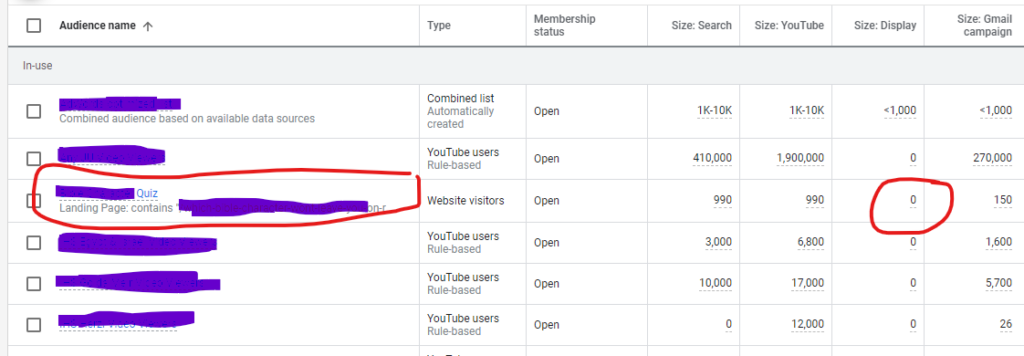Post map
ToggleNowadays, with the remarkable development of technology, the majority of businesses and users utilize Google to create sales promotion strategies. One of the crucial factors in Google Ads is retargeting. What is the size of Google retargeting audience? How large is the retargeting audience on Google? In today’s article, let’s explore and answer these questions with Optimal FB!
What is retargeting?
Google retargeting, or retargeting, is a type of advertising that Google provides to assist advertisers in reconnecting with users who have previously visited their website within a certain period. Specifically, this audience typically includes individuals who have taken actions such as viewing products, adding items to the cart, or even completing the purchase process. Utilizing Google retargeting allows advertisers to continue reaching and interacting with this audience, encouraging them to complete the purchase process or take further actions. This increases conversion rates and the effectiveness of advertising campaigns. If you are beginning to learn about Google retargeting, it’s essential to first have an overview of Google’s advertising services. This will help you better understand how Google retargeting works and how it can be integrated into your marketing strategy.
Google retargeting targets specific audiences such as:
- Customers who visited the website but did not convert.
- Customers who visited the website a certain number of times.
- Customers who first visited the website through advertising channels such as SEO, Google Adwords, etc.
- Customers who visited and completed goals such as making a call, placing an order, etc.
- Customers who viewed a specific item on your website within a certain number of days.

How retargeting works on Google
When a customer visits your website, the system automatically saves information about their behavior by attaching a tracking code, also known as cookies. This helps the system recognize and track users on your website. For example, if a user belongs to the retargeting customer list, the system will automatically store their cookies. Google will then use this information to distribute ads to those who have previously visited your website.
Before the retargeting list can function, users need to add a retargeting code to their website. This code is provided by Google Adwords or the websites they want to market to their customers. Once this code is added, the retargeting list will be activated, allowing the system to track and interact with users who have visited your website. This creates a valuable opportunity to continue engaging with potential customers, increasing conversion opportunities, and creating better marketing effectiveness.
Learn about Google retargeting audience size
Advertising reach is an important factor in shaping your online advertising strategy. It represents an estimate of how many people in your target audience your ad could reach, based on users signed in to Google services. When you set a location target for your ad, understanding reach will help you evaluate your ability to reach your target audience. Typically, reach is provided in the Google Ads advertising management interface, allowing you to get an overview of the reach of your advertising campaign within a specific geographic area.
However, it may be the case that your location targeting can only reach a limited number of people, which may cause some limitations in your advertising strategy. In this case, you need to carefully review and adjust your advertising strategy to ensure that it remains effective and meets your business goals. To solve this problem, you might consider expanding your geographic reach or adjusting other factors such as audience targeting, keywords, or sales offers. This way, you can optimize your advertising campaign for maximum effectiveness while still maintaining responsiveness from your target audience.
What is the size of Google retargeting audience?
The size of your Google retargeting audience depends on an estimate of the number of people your ads can reach across Google properties in a defined geographic area. However, reach numbers in Google Ads can vary significantly from census data or other sources. This is due to a range of factors, including:
- Number of accounts used per person: Each person may own multiple accounts, so the number of users may be estimated to be higher than the actual number.
- Number of temporary visitors to a geographic location: Users may visit a given geographic location temporarily, which can create discrepancies in reach estimates.
- The amount of time each person spends on the site: The time each person spends on the site can vary, affecting the estimate of the number of people reached.
- Number of people signed in: Data is collected based on the number of people signed in to Google services, so people who are not signed in are not counted in reach.
Additionally, visits by Search Partners or the Google Display Network are not included in reach estimates. This should be kept in mind when evaluating and adjusting your advertising strategy to ensure an accurate understanding of your campaign’s reach.

In the above article, Optimal FB has shared the most accurate detailed information, hoping that the content can help you learn about retargeting audiences and determining audience size. Google retargeting audiences in the most effective way.
Contact Info
Information about “What is the size of Google retargeting audience?” hopes to provide you with additional necessary knowledge. At optimal FB, there is a team of highly qualified and experienced staff and experts who will provide facebook agency account as well as support when you run Facebook ads. Contact us via phone number: +84 564 104 104.
Frequently asked questions
Measuring audience size in Google offers many important benefits for businesses and advertisers. First of all, measuring audience size helps identify and better understand potential customers, thereby creating a more effective marketing strategy. This way, businesses can optimize their advertising campaigns to match the needs and preferences of their target customers, thereby increasing their chances of conversion and increasing sales. In addition, measuring audience size also helps evaluate the performance of advertising campaigns, thereby making necessary adjustments to improve efficiency and optimize advertising costs. At the same time, through analyzing audience data, businesses can also gain a deeper understanding of their market and purposefully shape their long-term business strategy.
Although Google Remarketing Ads have many advantages such as increasing conversion opportunities and optimizing advertising costs, they also have their own disadvantages. One of the common disadvantages of Remarketing is the annoyance it can cause for some customers. When a user has a frustrating experience or doesn’t want to make a transaction, constantly receiving notifications or ads from the same business can annoy them and have a counterproductive effect. This can lead to users blocking or turning off that business’s ads, reducing the performance of the Remarketing campaign.


